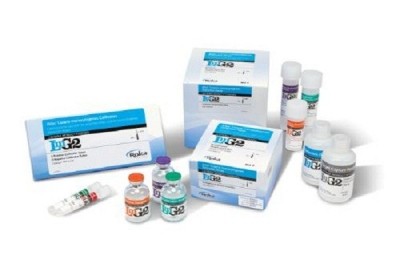Roka develops limits testing for poultry

The firm’s limits-based testing technology, based on its existing Atlas system, can identify the presence and level of Salmonella within a production shift by looking at whether the pathogen is above or below a set level.
Enrichment time and temperature and input volume of the Atlas system are modified for the limit testing approach.
Cargill approached Roka in late 2013 and the technology was provided to the firm by spring 2014.
The US Department of Agriculture’s Food Safety and Inspection Service (USDA-FSIS) recently revised guidelines to help poultry processors control Salmonella and Campylobacter in raw food products.
Limits-based testing
The semi-quantitative tool can detect one colony-forming unit per gram (1 cfu/g) level of Salmonella in 375g ground turkey samples in one working shift.
It is an additional way to monitor process control and reduce risk associated with high Salmonella loads entering the market by helping with lot release decisions.
Erin Dreyling, vice president, commercial support at Roka, said there was increasing regulatory pressure to drive down Salmonella in raw products.
“New ways are needed to control Salmonella in the production chain in an actionable timeframe. If the flock is coming up with high levels you can change interventions,” she told FoodQualityNews.
“When making product release decisions you need to know if there are high levels to prevent it going into commerce. It adds to the toolbox food safety professionals have so they can respond in better fashion.
“With the Atlas technology you can tune in whatever level industry is interested in.”
Roka said its rapid molecular testing technology can narrow the window between testing and action - preventing contaminated foods from finding their way to store shelves.
Traditional pathogen detection methods provide a qualitative presence or absence result. This is effective to measure prevalence but does not provide insight on the level of potential contamination in a sample, said Roka.
Threshold limits testing results deliver a picture of process controls and product risk without impacting production schedules.
“We can develop this for other pathogens or meats but we have not done so to date as the greatest need was in the poultry industry to control Salmonella,” said Dreyling.
“Regulation requirements in the US look at performance standards not a zero tolerance standard. The limits-based approach works well and enables risk-based decisions in product coming in or going out.
“Other pathogens or matrixes such as peanut butter and produce, regulations are zero tolerance so you need prevalence positive and negative tests to take action.”
MBio and Roka partnership
Meanwhile, MBio Diagnostics has revealed a product development partnership and licensing agreement with Roka Bioscience.
The firm works in clinical diagnostics and sample testing and said the firms would jointly carry out product development.
Chris Myatt, MBio CEO, said commercialization partnerships are an important aspect of business strategy.
“We have made enormous progress advancing our platform technology in recent years, and we are now executing on strategic partnerships that open new high-value opportunities.
“Recent high-profile cases of foodborne illness associated with fast food restaurants and supermarket ice cream clearly demonstrate the need for better food safety testing solutions. Our partnership with Roka positions MBio to help address this important public health need.”
The MBio Array System is a portable multiplex reader that the firm claims provides lab-quality results in one to 20 minutes using disposable load-and-go cartridges.
The System uses patented LightDeck planar waveguide technology that eliminates sample prep and can be designed to detect key analytes including: proteins, cells, nucleic acids and small molecules.





















